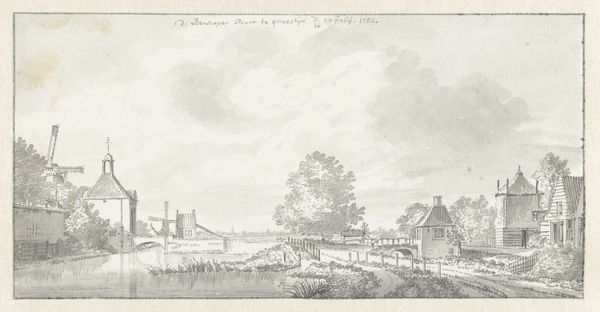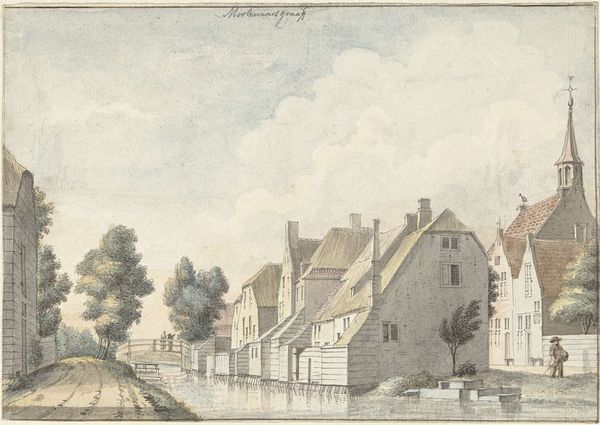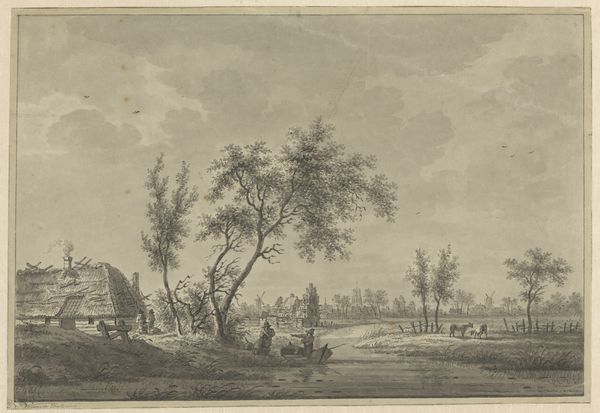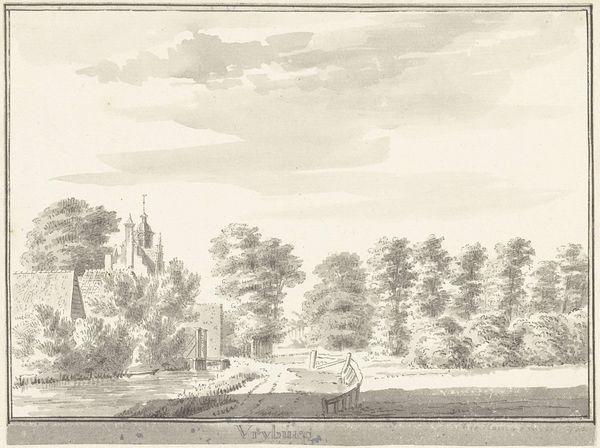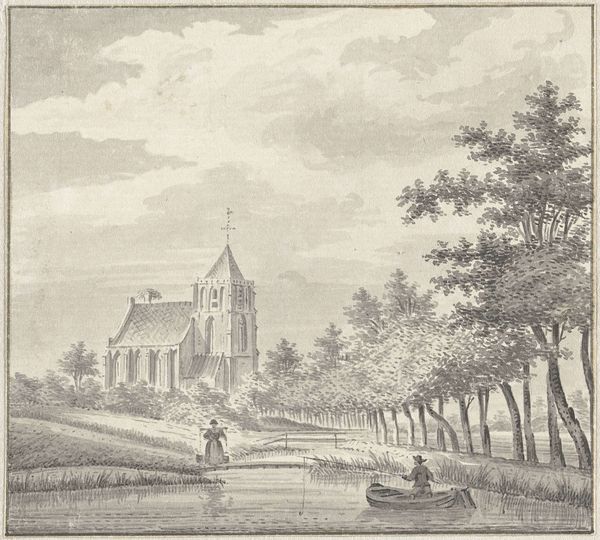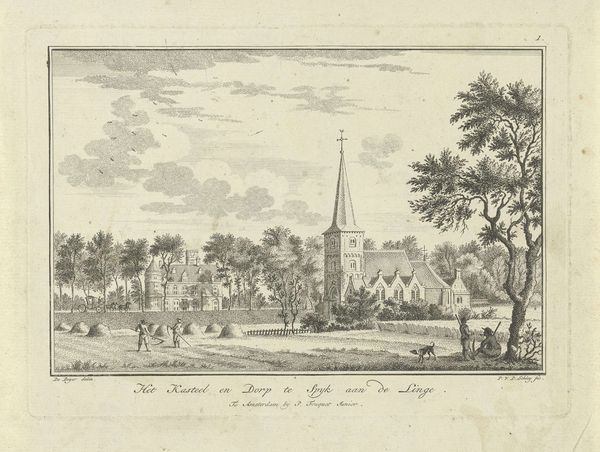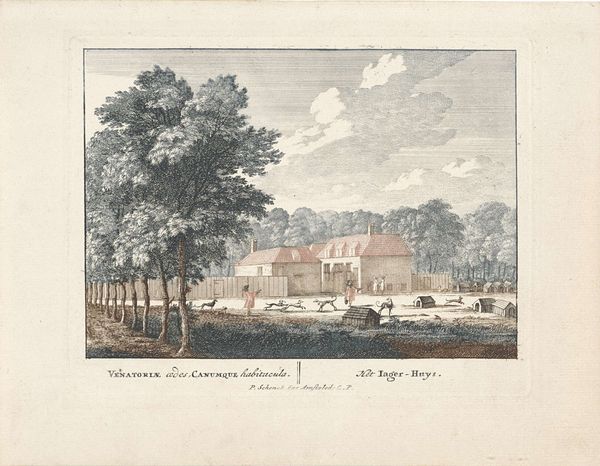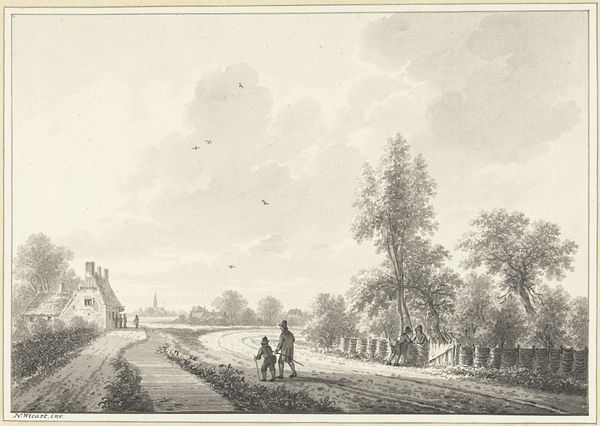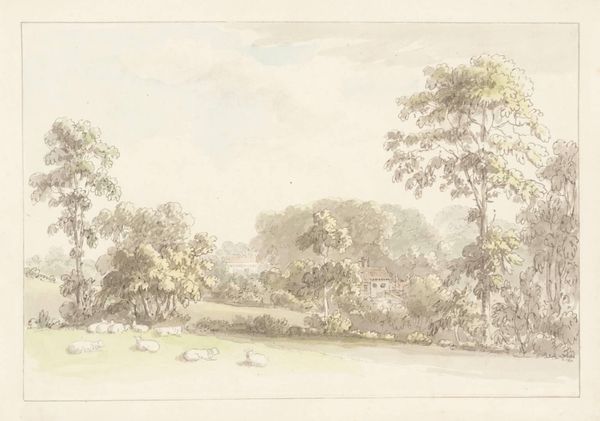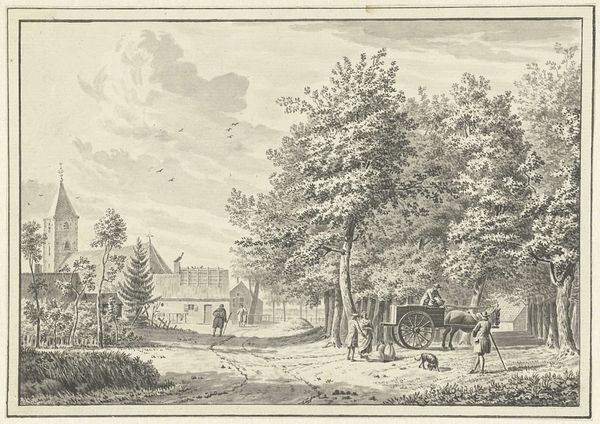
drawing, painting, plein-air, watercolor
#
drawing
#
dutch-golden-age
#
painting
#
plein-air
#
landscape
#
watercolor
#
genre-painting
#
watercolor
#
realism
Dimensions: height 140 mm, width 201 mm
Copyright: Rijks Museum: Open Domain
Editor: So, this is "Oudeschoot en de Schooterschans" from 1732, a watercolor by Cornelis Pronk, housed here at the Rijksmuseum. It's… surprisingly tranquil. Almost mundane, with this sleepy Dutch countryside scene. What catches your eye when you look at it? Curator: For me, it’s fascinating how Pronk uses this seemingly ordinary landscape to reflect the growing cultural emphasis on the Dutch Republic's history and identity in the 18th century. He's not just painting a pretty picture; he's documenting a specific locale, embedding it with a sense of place and perhaps even national pride. Do you notice how the composition guides your eye to the church and fortifications in the background? Editor: Yeah, now that you mention it, the dirt road in the foreground does create a path. Is that how landscape paintings were being used back then, to highlight specific places and reinforce ideas about national identity? Curator: Precisely. Think about the social context. The Dutch Golden Age had passed, but there was still a desire to maintain a sense of national importance. Paintings like these, often commissioned by local elites or institutions, served as visual records, celebrating local heritage. What do you think that lone cow on the hill adds to the scene? Editor: I didn’t even notice it, it looks so casual! I guess it brings a sense of normalcy, like saying, 'this is our land, here’s the everyday life taking place’. Almost propagandistic, in a subtle way? Curator: That’s a keen observation. Art always reflects its patrons and the power dynamics of its time. Pronk positions this serene setting with markers of Dutch rural identity for both aesthetic and public roles. How does the inclusion of everyday life affect its significance in that cultural environment? Editor: Thinking about it that way, makes me view these paintings with different eyes; art becoming almost an intentional recording device that affects culture in the future. I hadn't thought about landscape art holding that type of cultural power. Curator: It's a valuable realization. Understanding art within its socio-political context reveals its deeper meaning and public influence.
Comments
No comments
Be the first to comment and join the conversation on the ultimate creative platform.

